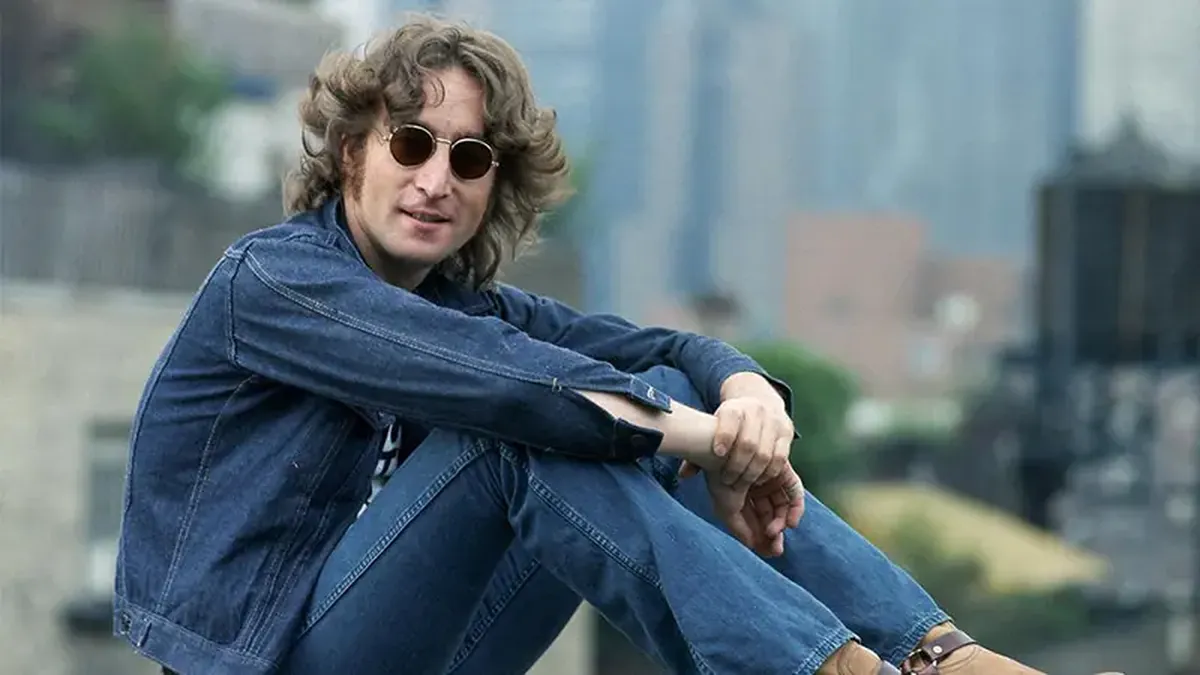
Many chapters of the life of John Lennon, the founder, co-author, vocalist, and guitarist of the extraordinary band The Beatles, which opened the doors to British rock, have been documented and interpreted as historical events. However, the unique global fame that this musician, who preferred to call himself an artist in both a literal and broader sense, achieved was not solely due to his contributions to music. A sharp-witted jokester and an incorrigible free thinker, he was marked by a rebellious spirit from childhood, which became his lifestyle. The search for harmony and destruction were as much allies in his biography as the quest for expanded consciousness and psychological therapy.
As one of the key figures of the 20th-century counterculture, he made creativity a tool for protest, becoming a voice for the left opposition. The name of this performer, composer, poet, artist, writer, and activist is etched in the struggle for peace, freedom, and equality. The author of anti-war anthems and political manifestos returned his Order of the British Empire to the Queen and dared to stand up to the American president. He stirred public opinion and inspired supporters with his personal courage, unafraid to pay for his views with his career and life. Perhaps the explanation for his legendary status lies primarily in this.
Childhood Drama
John Winston, a newborn from Liverpool with Irish roots, was named after his paternal grandfather, John Lennon, and British Prime Minister Winston Churchill. Born on October 9, 1940, in the port city in northwest England, the boy came into the world while his father, Alfred Lennon, a merchant sailor, was at sea. Financial checks regularly arrived at Newcastle Road, 9, where John’s mother, Julia, lived with him, sent by his father until he went AWOL in February 1944. When the sailor returned home six months later, Julia, pregnant by another man, refused to take back her lawful husband.
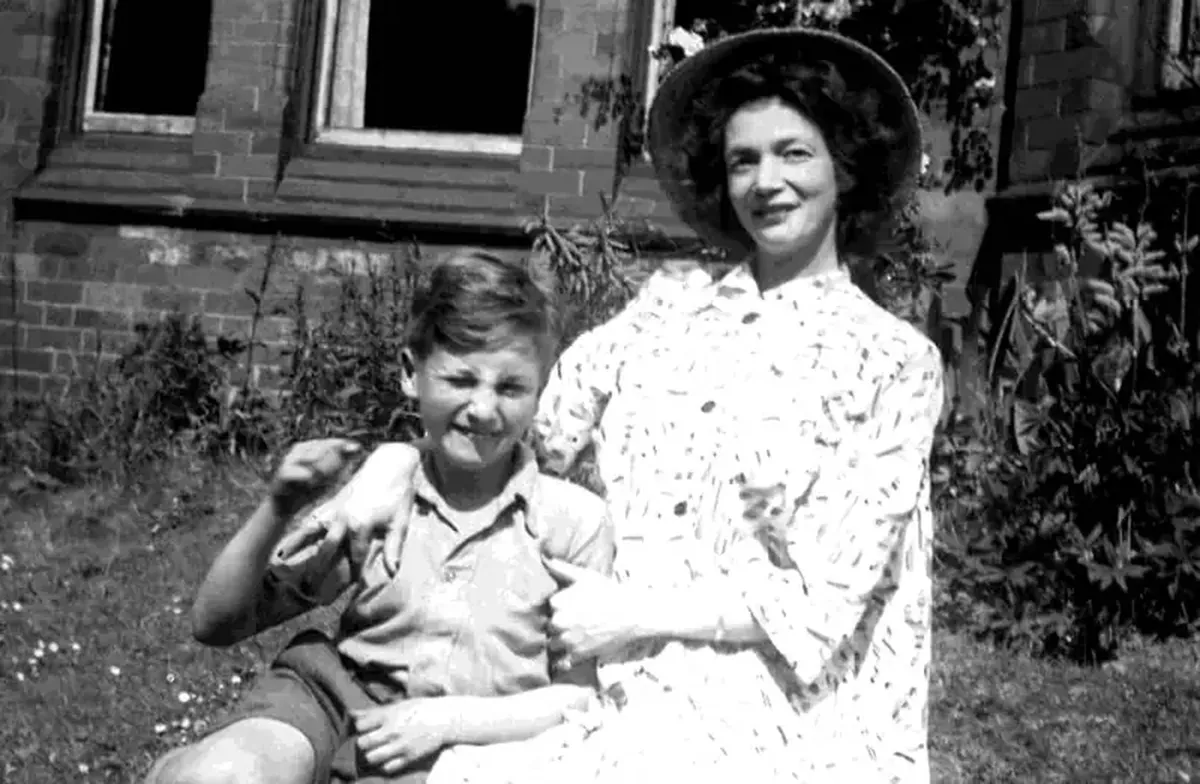
John with his mother
In 1946, the father visited his child and took him to Blackpool, planning to secretly emigrate with John to New Zealand. Worried, Julia chased after the fugitives with her partner and had a confrontation with the father, who suggested that the five-year-old boy decide whom he would like to stay with. Choosing his father twice, little John burst into tears when his mother left and hurried after her. To avoid tearing the child’s heart further, Lennon’s parents agreed that John would live with his mother. After two complaints about Julia to social services, she transferred custody of her son to her childless older sister, Mimi, who lived with her husband in a respectable suburb of Liverpool, Walton. It was in their home at 251 Menlove Avenue that Lennon spent his childhood and youth, and he did not communicate with his father for the next twenty years.
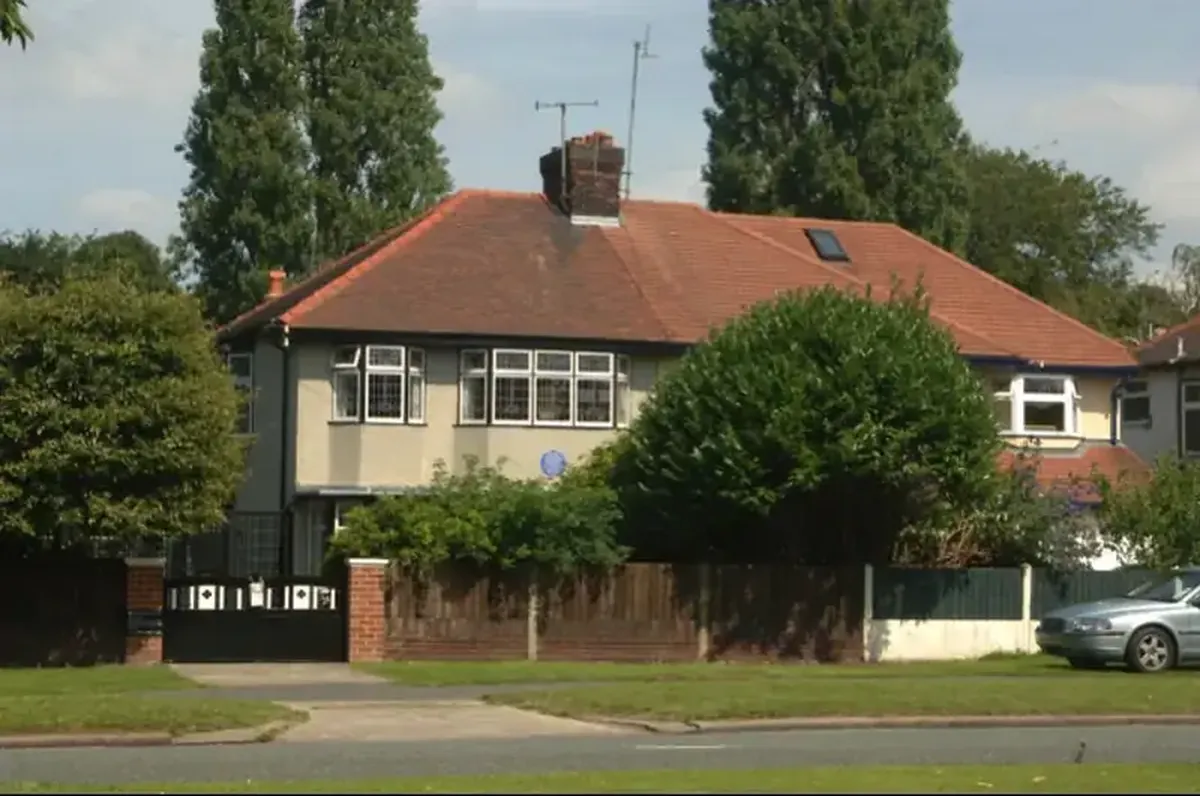
The house where John spent his childhood in Liverpool
Parents Are Not Gods
“In my family, there were five women,” John Lennon would write in his adult autobiography. “Strong, smart, and attractive, they were sisters to one another, and my mother was the youngest and least adapted to life. This was my first feminist education. My main distinction was my lack of attachment to my parents, and I extended this experience to my friends. I could tell them that parents are not gods, and my opinion was authoritative since I did not live with my father and mother. From childhood, I was a rebel, irritated by everything, yet I was always searching for love and recognition.”
As John Lennon recalled about his youth, the parents of all the boys in his circle, including Paul McCartney’s father, advised their sons to stay away from him because he did not recognize authority and led their well-off children astray. “And that was true,” the “troublemaker” realized, “I disrupted the peace of every family I knew. Perhaps I did so out of jealousy that others had a real home, which I did not have myself.” At the same time, John was not deprived of love and care from his relatives. He saw his mother and cousins almost daily, his uncle gifted him a harmonica, and his mother bought him his first acoustic guitar. However, the string instrument remained at his mother’s house because his aunt did not consider music a promising pursuit and tried to instill a love of books in John.
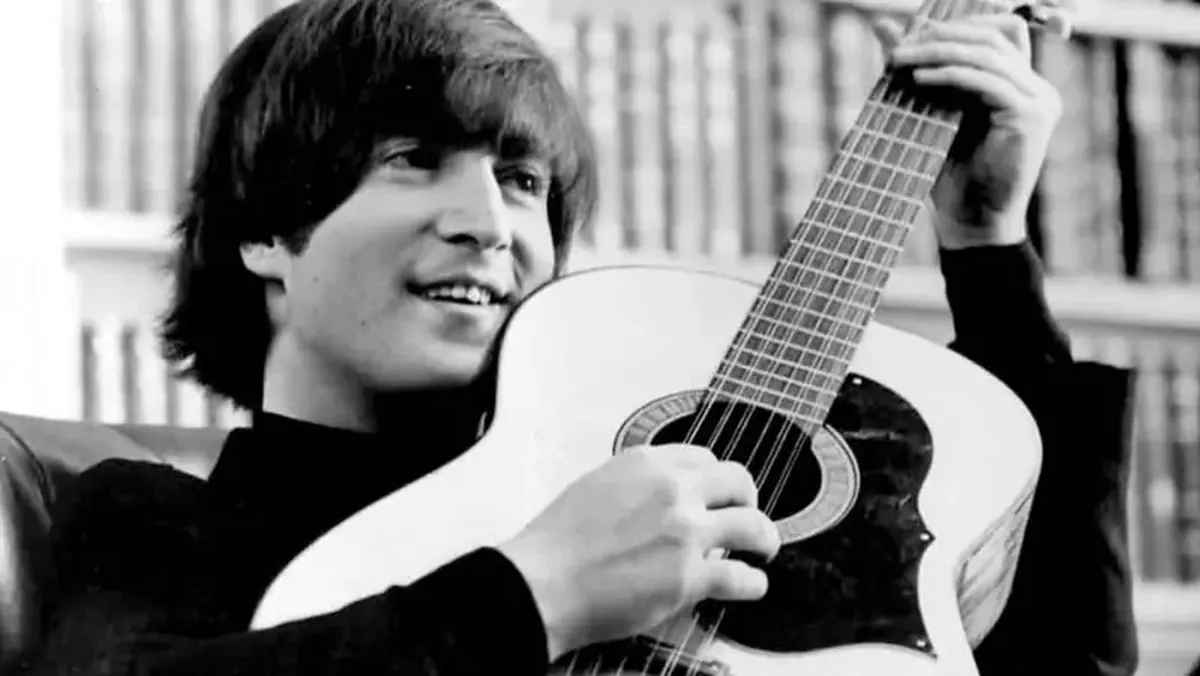
Excess Ambition
At Quarry Bank High School in Liverpool, where John Lennon studied from 1952 to 1957, he earned a reputation as a joker. Witnesses from that period described him with words like “carefree,” “good-natured,” “cheerful,” and “frivolous.” In the homemade school newspaper Daily How, the artistically talented student published his biting caricatures, and in a school essay on the topic “What I Want to Be,” he wrote: “Happy.” When he was told that he misunderstood the assignment, young John thoughtfully replied, “You don’t understand life.” Teachers noted that the young man “suffered from misplaced ambitions and directed his energy in the wrong places.”
Educators remarked that the student lacked diligence and did not fully utilize his potential. Lennon’s poor behavior led to a rift in his relationship with his aunt. Only thanks to her intervention and the support of the school principal was Lennon accepted into the Liverpool College of Art after failing his school exams. However, even there, John continued to receive warnings about his behavior, and the threat of expulsion loomed over him constantly. According to a classmate, who later became his first wife and the mother of Lennon’s eldest son, Cynthia Powell, John was eventually expelled from college in his penultimate year because he had not completed a single assignment in a year. The fact is that music had already become Lennon’s priority: he formed his first skiffle group, The Quarrymen, at the age of 15, and it was at one of their performances that he met Paul McCartney, whom he invited to join him.
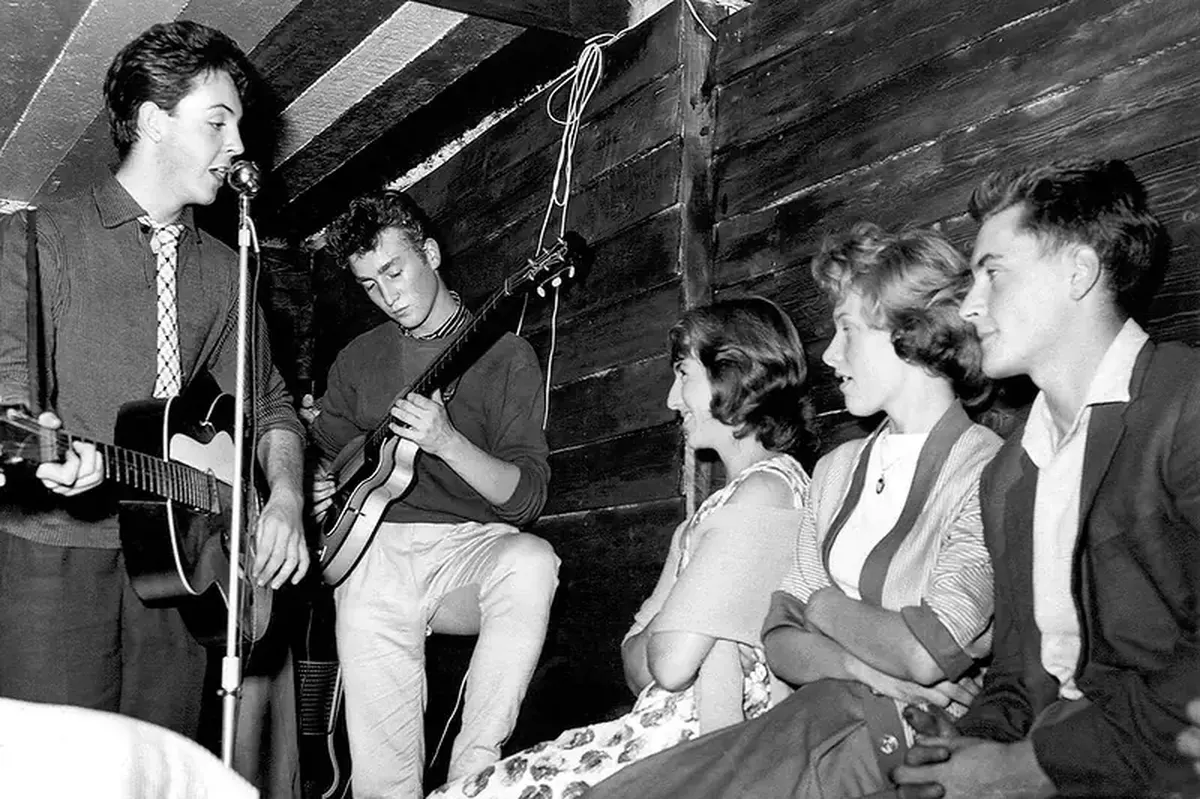
John and Paul’s early performances
Anger and Inspiration
At that time, Lennon (with a narrow tie, vest, cropped trousers, and platform suede shoes) looked like a representative of the first youth subculture of the 1950s, the Teddy Boys, who challenged society with their “informal” appearance. But the real challenge for Lennon came with the death of his mother, Julia, in 1958: the 44-year-old mother of four was struck by a car at an intersection, driven by a drunken policeman who was also untrained. Aunt Mimi called the unpunished, but suspended driver a murderer (he later became a postman and delivered mail to members of the “Liverpool Four” from their female fans). John Lennon drowned his shock in alcohol for two years and often initiated fights to release his “blind rage.”
The death of his mother inflicted a deep emotional wound on John, who was still not yet eighteen, but at the same time, it brought him closer to Paul McCartney, who also lost his mother in his youth. Paradoxically, this trauma provided Lennon with much inspiration for his creativity. In memory of Julia, the song “Julia” appeared in The Beatles’ repertoire. Two songs by John Lennon from his solo album, John Lennon/Plastic Ono Band, are also dedicated to his mother: the singles “Mother” and “My Mummy’s Dead.” In 1963, the musician named his firstborn Julian in honor of his mother (John Lennon’s children were born to his first wife, Cynthia Powell, and his second partner, Yoko Ono).
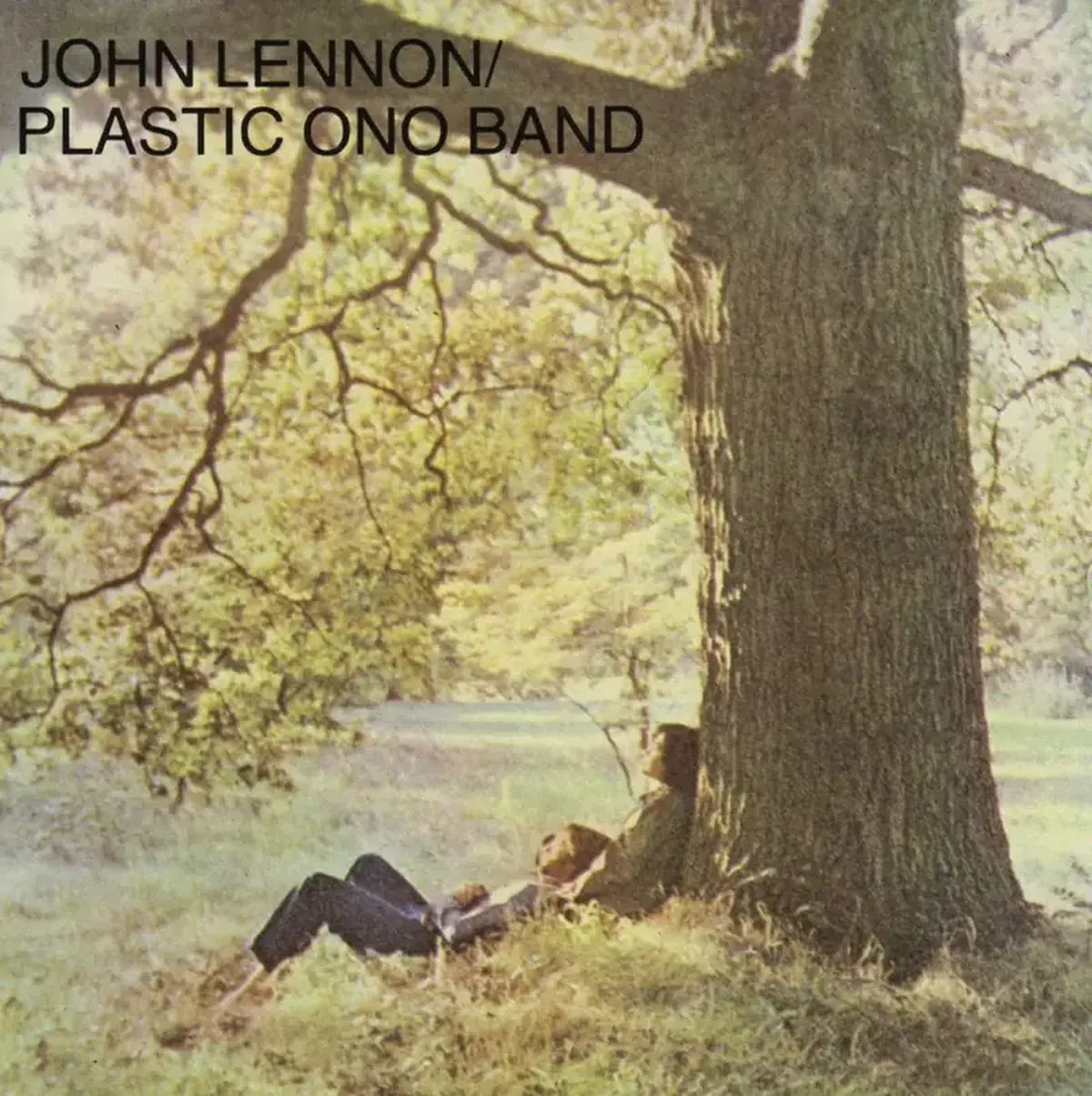
“Personal Elvis”
In his youth, John Lennon was, according to McCartney, their “personal Elvis.” Although the early pop songs of the group did not require deep lyrics, as at that time, sound mattered more than Lennon’s beloved wordplay, in which he would later demonstrate his mastery, the other members of the band adored him. Paul McCartney attributed the musicians’ respectful attitude toward John Lennon to his wit, intelligence, and charisma: “John was older and the most clever of all of us – that was a leader’s trait.” John could poke fun at aristocrats during a performance at the Royal Variety Show, asking the audience in the cheap seats to clap their hands, while those in the expensive boxes, including members of the British royal family, such as the Queen Mother, were asked to jingle their jewelry.
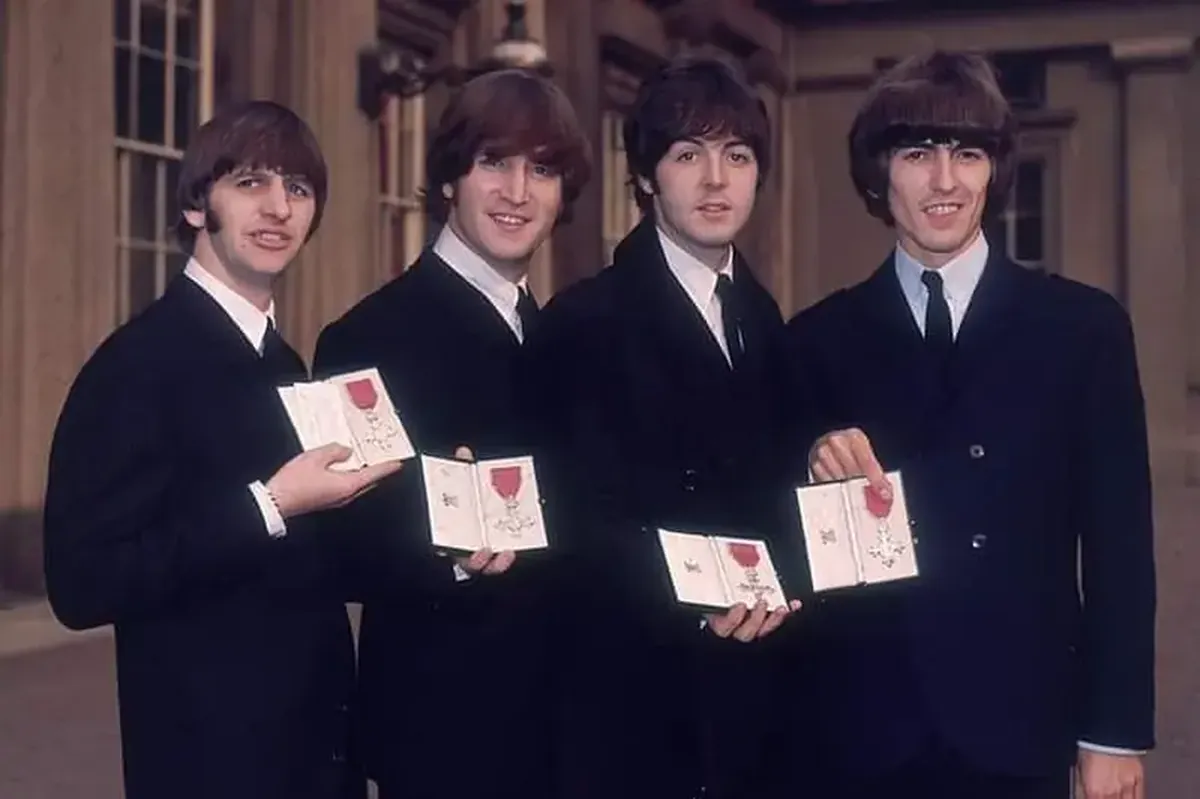
The Beatles received the Order of the British Empire
But the royal family was not offended: in 1965, The Beatles received recognition from the British establishment and were awarded the Order of the British Empire in honor of the Queen’s birthday. Amidst continuous touring (due to his work, like his father before him, the musician “missed” the birth of his son), filming movies, and writing songs, John Lennon prepared two collections of miniatures in the 1960s, “Writing as It Comes” and “I Spaleць in the Wheel” (the title reflects the punning style of the author). A hectic schedule and a chance encounter at a party with banned substances opened the door to LSD for the creator. Lennon gained weight and later referred to that time as the “fat Elvis” period.
LSD and Pacifism
In 1966, Lennon gave his first scandalous interview, in which he stated that The Beatles were “more popular than Jesus,” predicting the end of Christianity. Such statements did not resonate in England, but in the U.S., following public record burnings of The Beatles, protests by members of the Ku Klux Klan, and personal threats to Lennon, the band’s concert activities were halted. After the band’s final concert on August 29, 1966, John starred in the only feature film without The Beatles: the anti-war satirical comedy “How I Won the War.” Overall, John Lennon appeared as himself in 35 feature films and participated in 20 television programs.
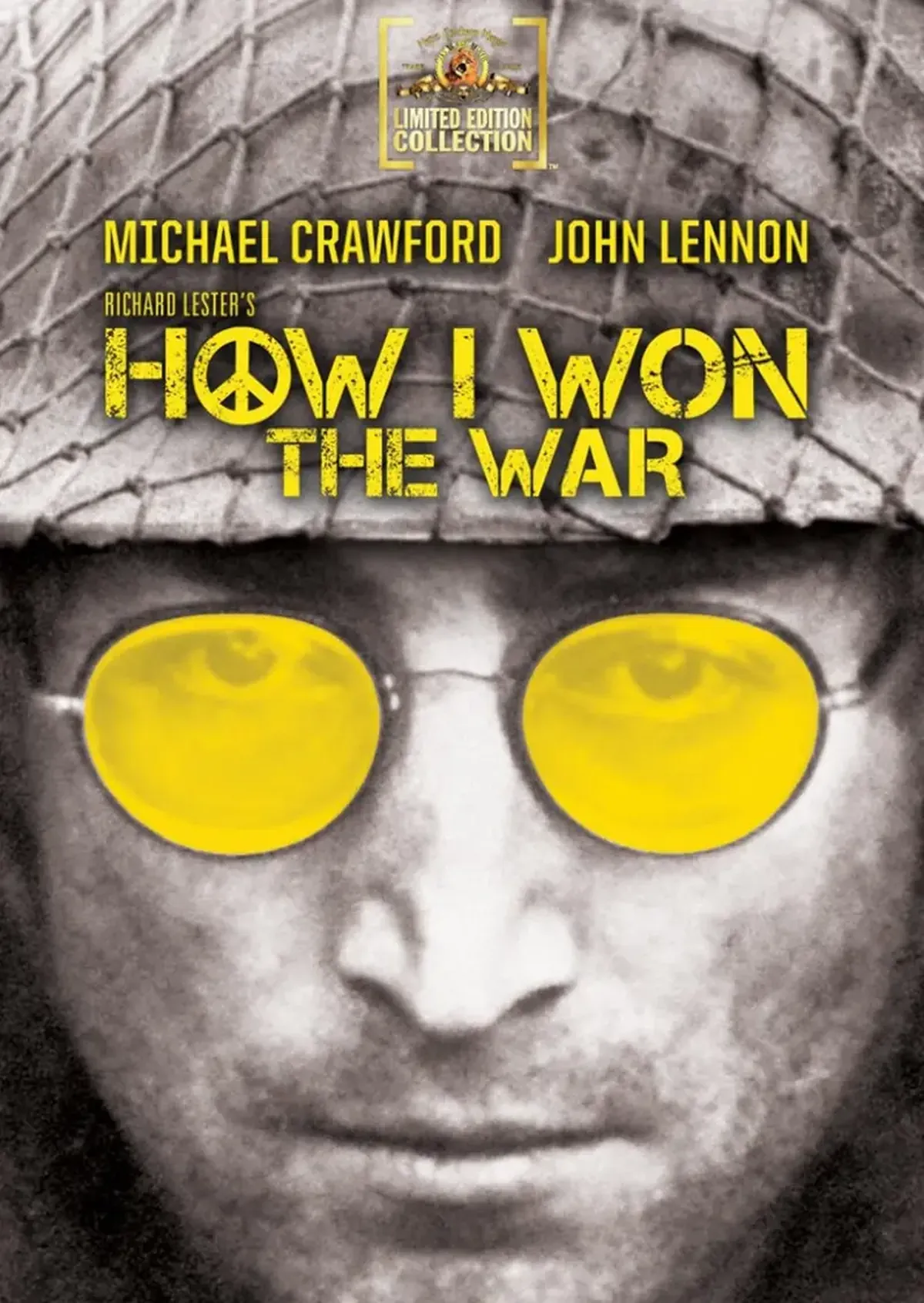
According to Irish writer Ian MacDonald, the passion for psychedelic drugs brought Lennon to the brink of “losing self-identity” during that period. But another dimension of such stimulation of creative abilities was the creation of lyrics that critics from Time called “remarkably inventive.” After the release of the single “Strawberry Fields Forever” and the iconic album “Sgt. Pepper’s Lonely Hearts Club Band” (a turning point in The Beatles’ career), Lennon established himself as a songwriter of meaningful verses that contrasted with the simplistic songs of the band’s early period, when they were co-written by John Lennon and Paul McCartney. The pacifist stance of the author in the song “All You Need Is Love” became the property of a 400-million international audience during the satellite broadcast “Our World.”
But That’s Not All
The news of the death of The Beatles’ Liverpool manager Brian Epstein caught John Lennon and the band members during a training session on transcendental meditation. The technique of the Indian guru, using a personal mantra to unlock potential and reduce stress, did not protect Lennon from realizing the impending problems. “I was scared for the band’s fate,” the leader recalled, “because we could only play music. Was that all there was?” Paul McCartney became the organizer of the first post-Epstein project for the band. The telefilm “Magical Mystery Tour” became The Beatles’ first failure with critics and audiences, but the soundtrack by John Lennon, “I Am the Walrus,” was successful.
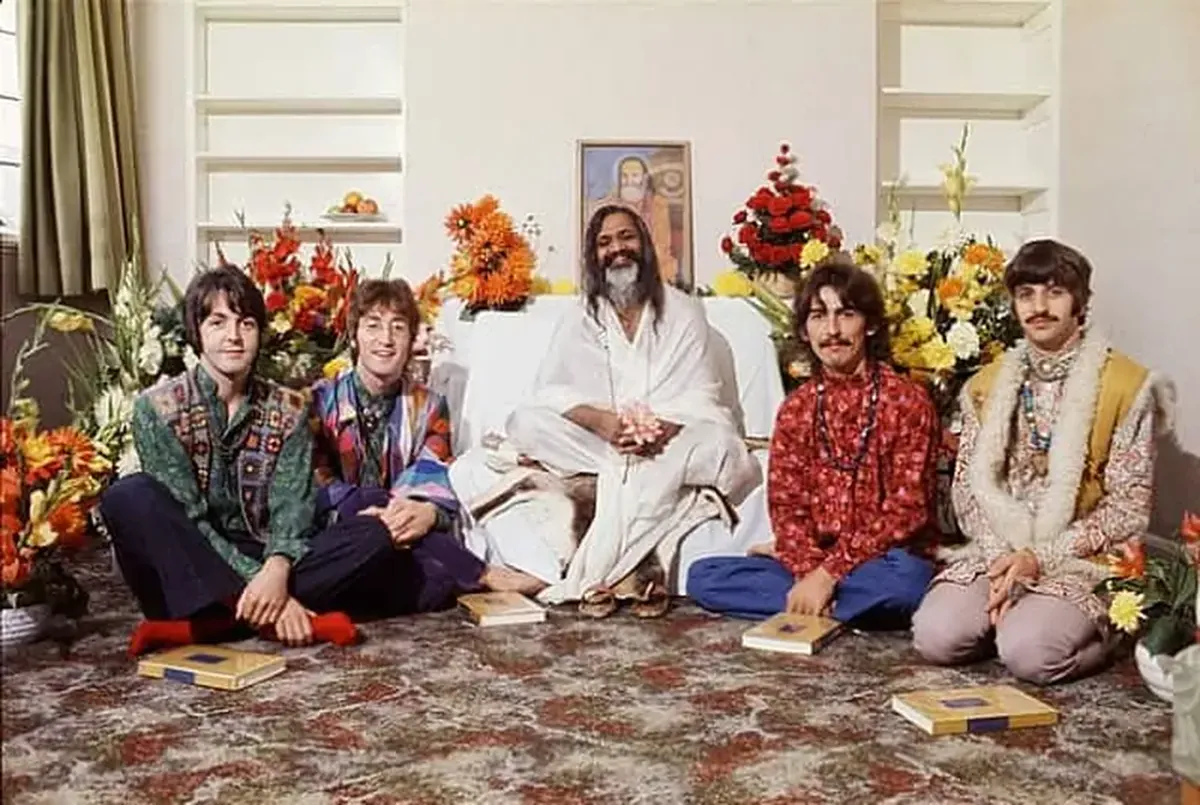
Returning from India to London, The Beatles came back with new inspiration and differing views on transcendental meditation. The commercial activity of the newly created corporation Apple, which consisted of Apple Records and other subsidiaries, was an attempt to achieve “creative freedom within a business structure,” according to Lennon. The debut record under the Apple label was called “Revolution” and was released during a period of public unrest and protests. However, this time, John Lennon’s pacifist ideas in his songs were met with ridicule from political radicals. The tension during the recording of the “White Album” was heightened by Lennon’s violation of an agreement not to invite wives and girlfriends to the studio sessions. From then on, the Japanese artist Yoko Ono was always by his side, whom the musicians later blamed for the band’s breakup.
What Did He Find in Her?
At the time of meeting his 33-year-old new partner, Lennon was 25 and knew nothing about the strange Japanese woman except that she was looking for 365 “intellectual butts” for a shoot through a newspaper ad. In contrast, Yoko Ono was well aware of John Lennon’s financial status and reminded him of it at every opportunity to extract funds for organizing an exhibition. He gave her money for an art project and soon resonated with the conceptual ideas of the mysterious lady. Before long, they became a couple living under the brand John & Yoko. The two tried to merge into one: they wore matching white suits, had the same hairstyles, parting their long hair down the middle, and combined their faces in a joint film. Among their art ventures were the launch of 365 white balloons with the inscription “You Are Here,” a 30-minute short film featuring a smiling Lennon, and a 20-minute mini-film “Self-Portrait” with close-ups of John’s intimate areas.
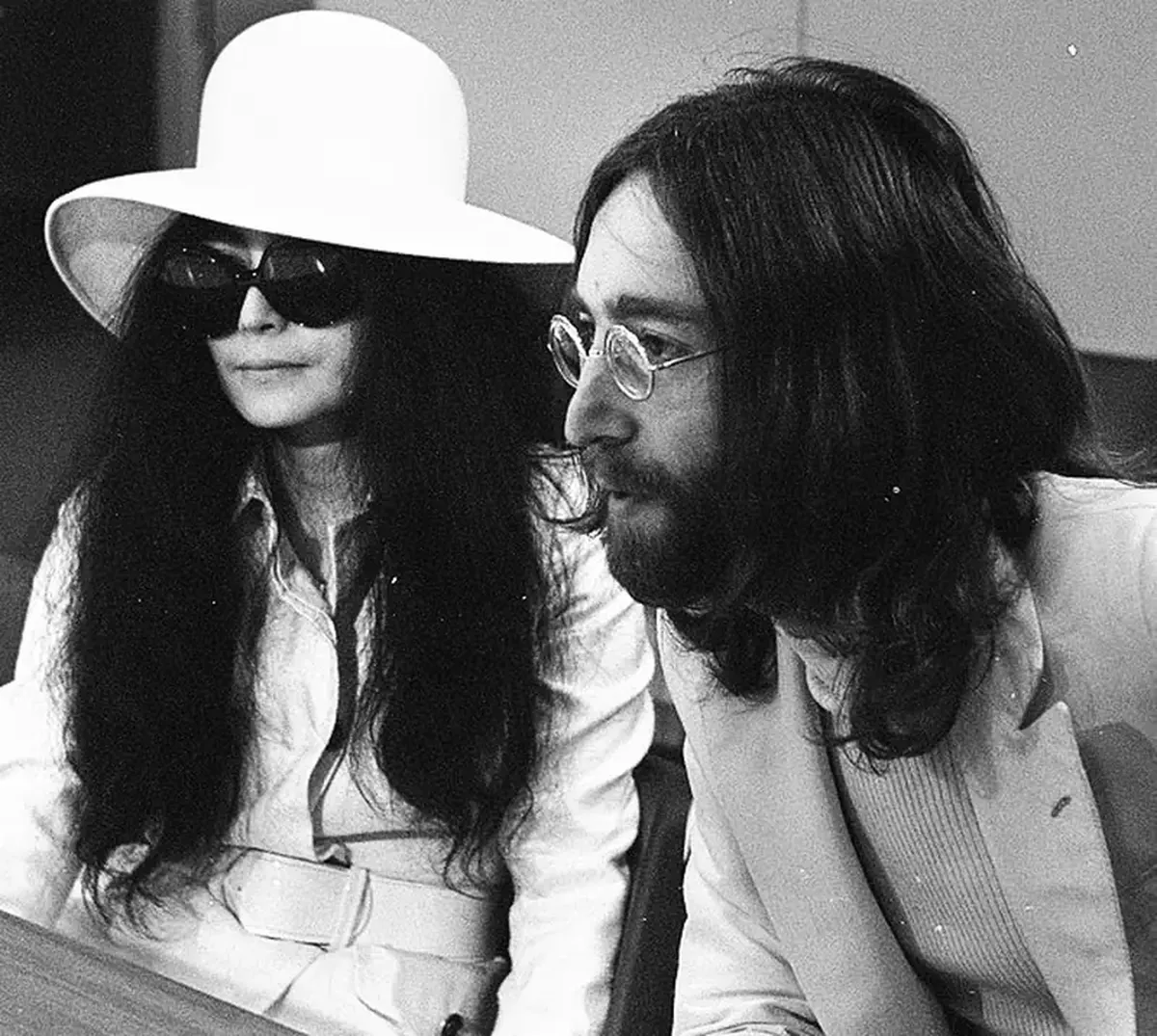
Married in 1969, Lennon and Ono depicted scenes from their honeymoon in a series of lithographs titled “Bag One,” where 8 out of 14 images were banned and confiscated as obscene. Lennon’s creativity during this period continued to extend beyond The Beatles: the creative couple recorded three albums of experimental music, formed the Plastic Ono Band, released the live album “Live Peace in Toronto 1969,” and recorded three songs by John Lennon: “Instant Karma,” “Cold Turkey” (a documentary account of the state of withdrawal from heroin), and “Give Peace a Chance” (a song against the Vietnam War that coincided with John and Yoko’s “bed-in for peace” action in a posh hotel room). With the avant-garde artist by his side, Lennon felt like the artist he truly was. An unusual experience for the unconventional couple was the affair organized by Yoko with their secretary, May Pang: according to an ancient Japanese tradition, a wife was to choose a lover for her husband if he lost interest in her. After living separately for a while, Lennon returned to his second wife, leaving the bewildered mistress without any explanation.
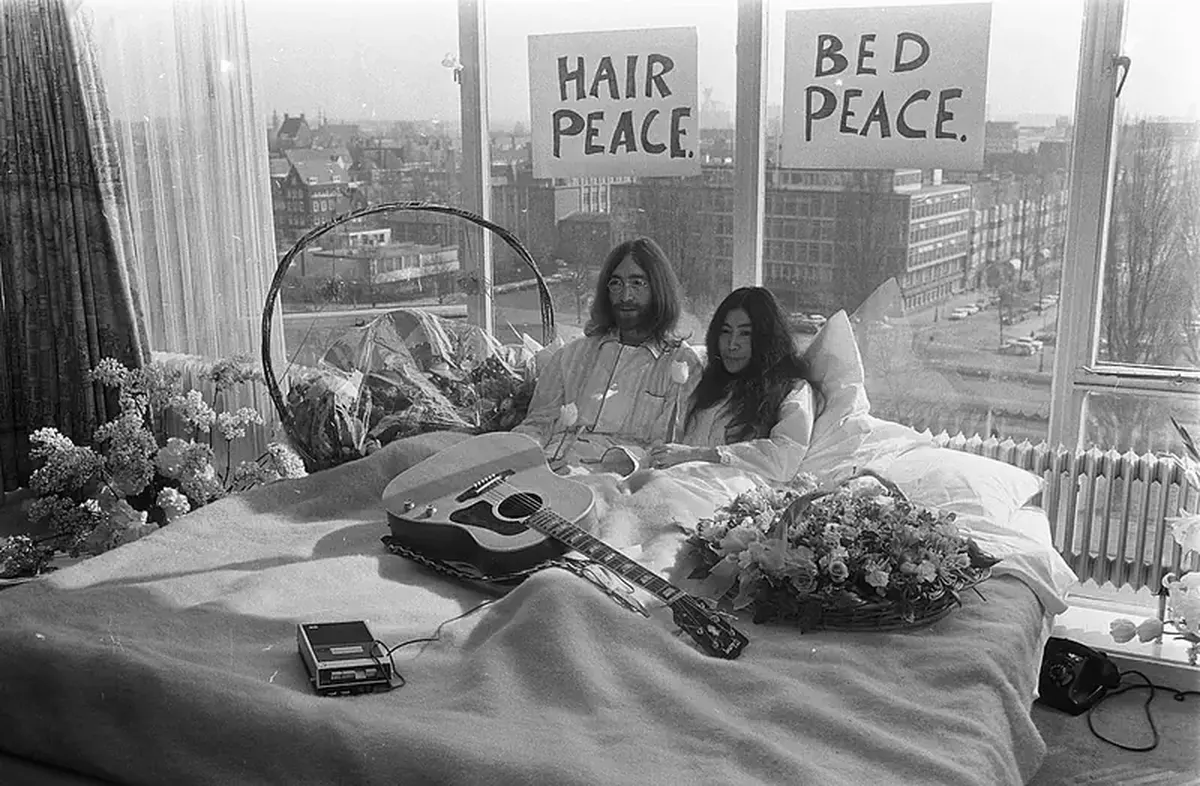
John Lennon and Yoko Ono on the first day of the “Bed-In for Peace” protest
Freeing Himself from Pain
Another significant break in Lennon’s life came in 1969 with his departure from The Beatles. He only regretted agreeing to wait for a public announcement (as the band was tied to business obligations and a promotional campaign for a new album). John Lennon felt deceived when Paul McCartney, who announced his departure from the group first, used the event to promote his solo album. “I created this band; I must also disband it,” Lennon believed.
He was deeply offended by McCartney not only because he disliked Yoko Ono but also because he concentrated power over their joint project in his own hands. Yet despite Lennon’s attacks on McCartney in the song “How Do You Sleep” and a three-year dispute with his former friend in the media, this creative duo remains the most successful in the history of pop culture. John Lennon and Paul McCartney would later draw closer and then drift apart, and John summed up his complicated feelings with this confession: “In my career, I had to work with two remarkable people – Paul McCartney and Yoko Ono, and that is a worthy choice.”
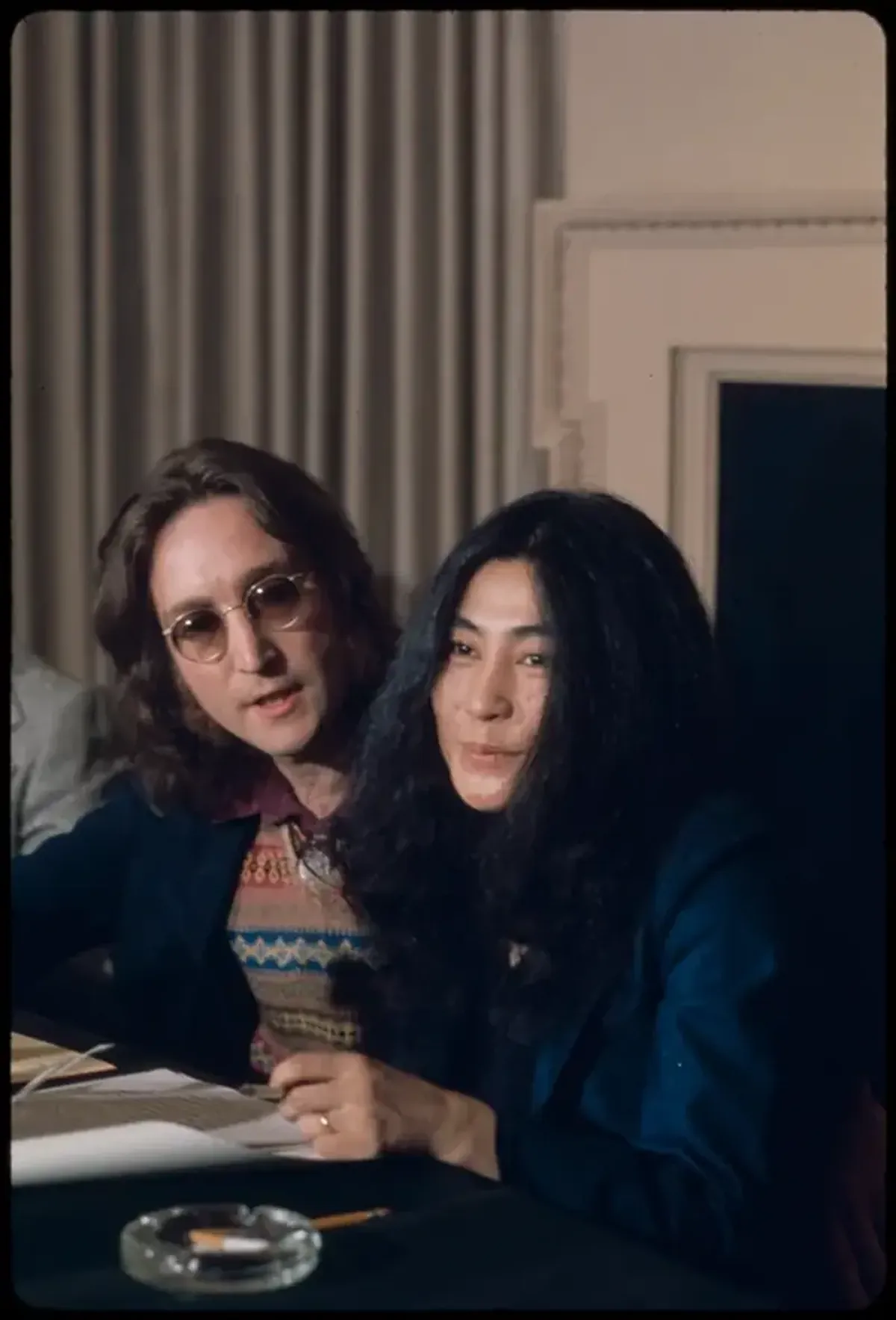
In 1970, John and Yoko underwent psychotherapy in London and Los Angeles to relieve the emotional pain accumulated since early childhood. Lennon released a solo album with confessional lyrics that, while having limited commercial potential, were well-received by critics. Lennon’s vocals in the song “God” were called “arguably the best performance in rock music history.” In the song “Mother,” John expressed how he felt abandoned in childhood, while the song “Working Class Hero” became a fierce critique of the bourgeois social system (due to the line “You’re still fucking peasants,” the song was not played on the radio). The fighter supported the underground publication and advocated for a world without religious denominations, rejecting the idea that “my God is more important than yours.” Protesting against his country’s invasion of Nigeria and condemning Britain’s support for the U.S. invasion of Vietnam, the musician returned the Order of the British Empire that had been awarded to him by the Queen.
America Against Lennon
After moving to New York in 1971, Lennon and Ono became active participants in the American leftist movement. The “strategic countermeasure” against the musician’s anti-war protests by President Richard Nixon’s administration was an attempt to deport him. The legal battle lasted four years, and by 1976, the U.S. immigration service denied John the right to reside across the ocean. Lennon’s double album “Elephant’s Memory” addressed issues of women’s rights, interracial relations, Britain’s role in the conflict with Northern Ireland, and the author’s struggles to obtain a green card. The commercial failure of the long play was expected. Critics labeled Lennon a “pathetic aging revolutionary,” and two charity concerts in New York to help patients at a psychiatric hospital became the musician’s last full-length performances.
Due to threats of violence during performances, John Lennon was forced to cease concert activities. Unlike Yoko Ono, he was long denied residency in the U.S., and after performing for the rights of Native Americans, for the release of youth leader John Sinclair, and for the easing of prison conditions for activists, he was ordered to leave the country within two months. The birth of his second son, Sean, on October 9, 1975, saved Lennon from prolonged depression. After this joyful event, John Lennon, the father of two children, who had practically not participated in raising his firstborn Julian (he planned to mend his relationship with his eldest son in the future, which never came), decided to use the chance given by fate to become a good father at least for his younger Sean.
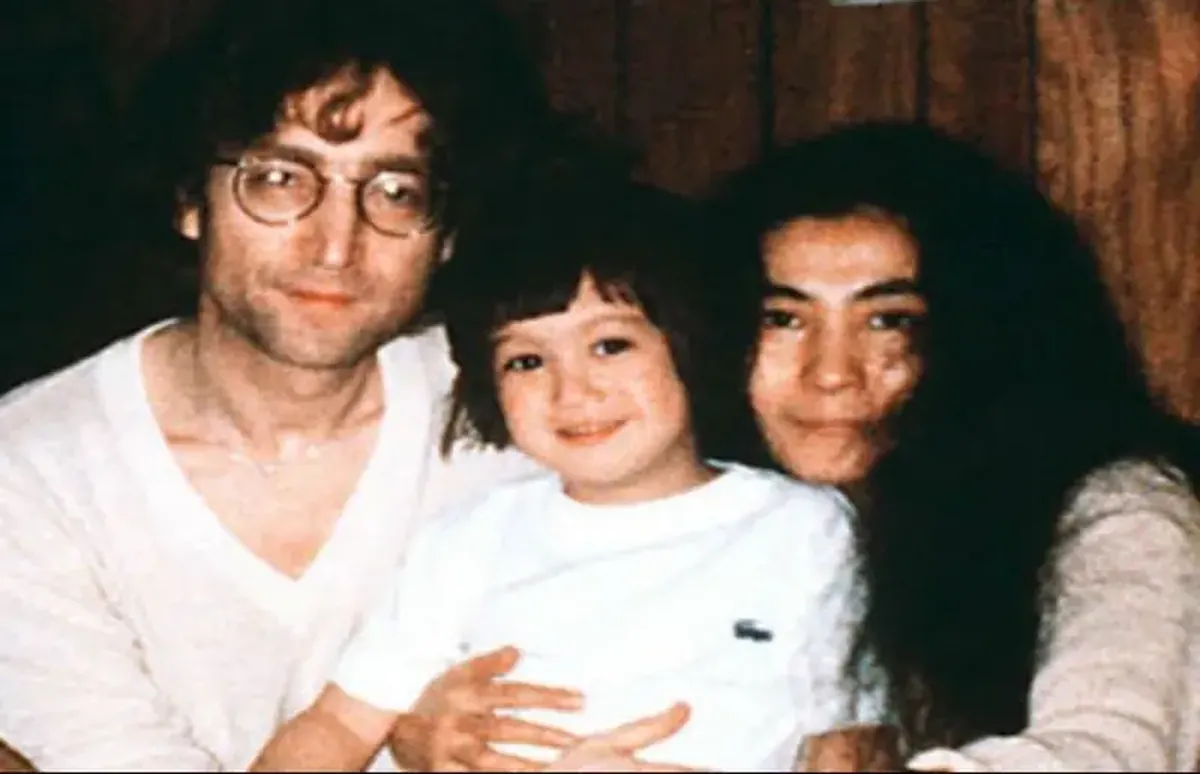
Pause or Finale?
The musician decided to take a break from his career and devoted the next five years to his family. During this creative hiatus, he only painted and wrote an autobiographical book. In the summer of 1980, Lennon enjoyed a pleasant vacation in Bermuda and sailed on a boat with his little son. The musical material of that time reflected his satisfaction with family stability. However, new recordings by John were released posthumously in 1984. Lennon’s life was cut short on December 8, 1980. He was shot by a fan, Mark Chapman, to whom he had given his autograph on the day of his death. The murderer did not hesitate to pay $50 to a photographer to capture the moment of his presence alongside his idol during the signing of the album. When John and Yoko returned home around 10:50 PM, having let their limousine go at the entrance to the Dakota building, Chapman, who was waiting for them by the house, fired his revolver at Lennon’s back and shoulder.
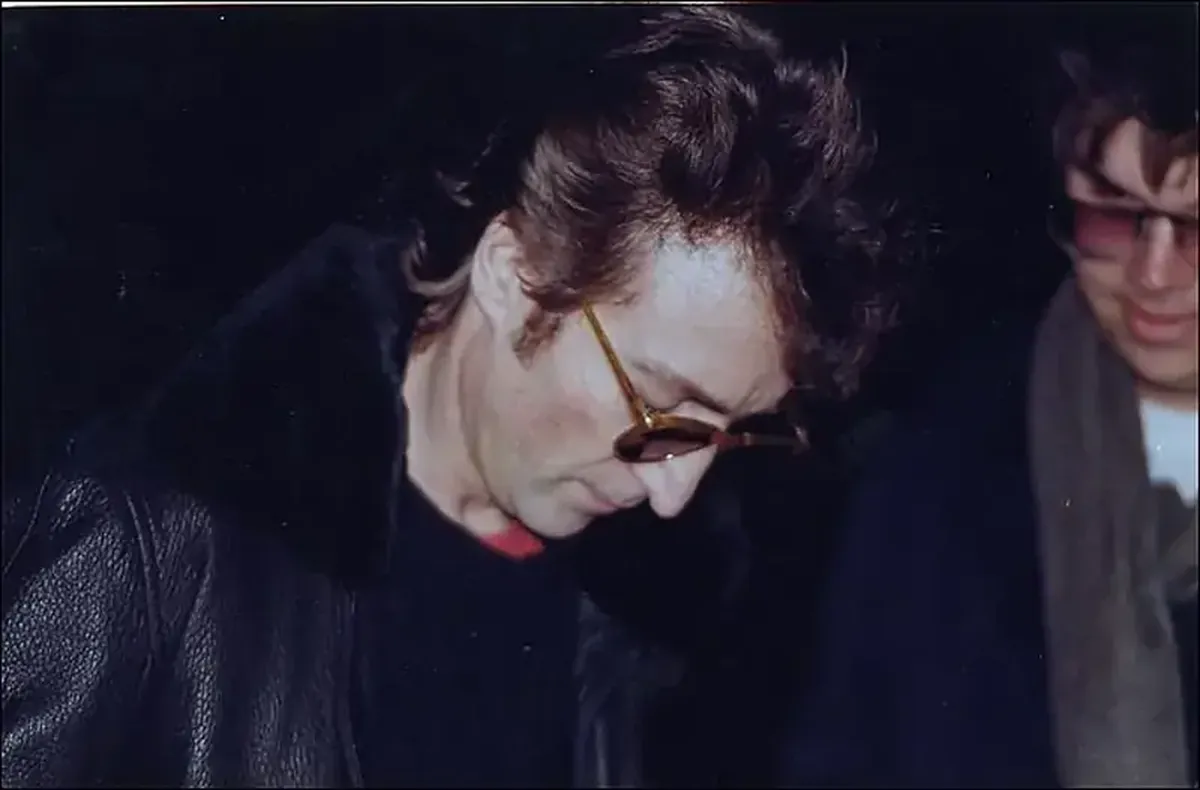
Lennon gives an autograph to his murderer, Mark Chapman (right)
“I’m in pain,” John managed to say to the concierge as he lost consciousness. The bullets, which had expanded in his body, struck Lennon from close range and pierced his aorta, leaving him with no chance of survival. Upon the arrival of a police car at 11:15 PM with the bloodied murder victim, medics pronounced John Lennon dead. The next day, Yoko informed fans that there would be no funeral, and after cremation, she scattered her husband’s ashes in Central Park, near the home where he lived with her and where the 91-year-old widow still resides. A memorial called “Strawberry Fields” later appeared at the site of his ashes in New York. The murderer, who is serving a life sentence, explained that he took his idol’s life out of jealousy for his popularity and a desire for similar fame. Now, the 69-year-old “secretive” inmate of the American prison Attica, who does not give interviews and does not allow himself to be photographed or filmed, could have been released (such permission is granted under American law by special decision after serving 20 years), but this is not done “for his safety” and for “public peace.” However, conspiracy theorists have never doubted that John Lennon’s murderer would be hidden from the world’s attention forever.
